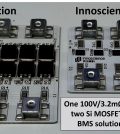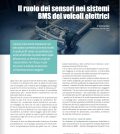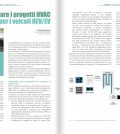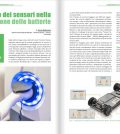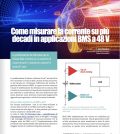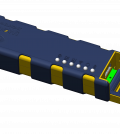Challenges in Battery Management for Hybrid/Electric Vehicles

Advances in battery technology have enabled some of the most exciting recent innovations in the automotive market, giving rise to new generations of electric vehicles (EVs) and hybrid/electric vehicles (HEVs). New applications such as energy storage systems (ESS) are also emerging which could revolutionize how energy is created, distributed and stored. Designers of these systems face significant challenges of cost, design flexibility, battery pack reliability and lifetime, and safety.
The battery management system (BMS) plays a defining role in how well a battery stack meets each of these design challenges. At the heart of the BMS is a battery monitoring integrated circuit (IC). This IC measures individual cell voltages which are used to determine state of charge and battery stack health.
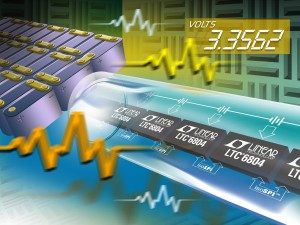
Fig. 1 – The LTC6804 from Linear Technology can measure up to 12 series-connected battery cells at voltages up to 4.2V with 16-bit resolution and better than 0.04% accuracy
The most critical characteristics of a battery monitor IC are accuracy, data robustness, and fault detectability to ensure safety. The accuracy of the monitor IC directly affects system cost, battery pack reliability and lifetime. Each cell has a limited capacity which must be carefully managed. Overcharging can cause safety and reliability issues, while over-discharging can affect the lifetime of the cell. Using a less accurate monitor IC requires that the system designer use larger “guard bands” to protect against overvoltage and undervoltage, therefore limiting the amount of total available capacity for the vehicle. A higher accuracy monitor IC can make use of more or each cell’s total capacity, reducing the total cost of the battery stack system.
For the best accuracy over time and harsh operating conditions, Linear Technology uses a sub-surface Zener voltage reference in the LTC6804 Battery Monitor IC (Fig. 1). This results in a guaranteed total cell voltage measurement error of less than 1.2mV. To maintain the best accuracy measurements in the presence of electrical noise and transients from inverters, actuators, switches, relays, etc., the LTC6804 uses delta-sigma ADCs with built-in 3rd order noise filtering.
Ideally, a battery stack would be divided into smaller modules which are distributed throughout the vehicle for better design flexibility and weight distribution. The challenge is that the battery modules need to communicate sensitive measurement data in an electrically noisy and physically harsh environment. CANbus was originally designed to provide robust communications in harsh automotive environments, but the data throughput demands of raw BMS data and component costs have kept CANbus from being adopted in EVs and HEVs. For this reason, Linear Technology has created the isoSPI interface to provide low cost robust communication for up to 100m cable lengths. The isoSPI interface built into the LTC6804 and the companion LTC6820 isoSPI communication interface IC works together with tiny transformers similar to those used in Ethernet networks and a balanced wire pair to provide up to 1Mbps data rates without the costs associated with CANbus. The isoSPI interface was designed for error-free transmission while subjected to the rigors of bulk current injection (BCI) interference testing. In practice, full performance against ultra-harsh 200mA BCI has been demonstrated at Linear Technology and duplicated at several key automotive companies, fully qualifying isoSPI links for chassis-harness vehicle wiring.
Safety is a top priority for EV manufacturers. As electronic components are used more extensively in automobiles, increased attention has been given to the impact their operation has on safety. Linear Technology has been a supplier to major automotive customers for many years and continuously works to improve its excellent quality and reliability levels. In addition, battery stack designers look to IC manufacturers to provide comprehensive fault detection. A battery monitor designed for automotive safety will be compatible with the ISO26262 standard and include redundant circuits, self-tests, watchdog timers, and communication error detection and correction.
As EV and HEVs continue to grow in popularity, battery stack system designers will work to continuously improve cost, performance and safety. Recognizing the key role the battery monitor IC plays in each of these areas, automotive designers will use ICs that provide the highest levels of accuracy, robustness, and fault detection.
Brian Black, Product Marketing Manager, Signal Conditioning Products, Linear Technology Corp.
Contenuti correlati
-
Un nuovo VGAN a 100V da Innoscience Technology
In nuovo dispositivo VGaN a 100V di Innoscience Technology può essere utilizzato per raggiungere un’efficienza elevata nei sistemi di gestione della batteria (BMS) da 48V o 60V, oltre che in applicazioni su interruttori di carico ad alta...
-
Il ruolo dei sensori nei sistemi BMS dei veicoli elettrici
I sensori di più recente introduzione non solo aiutano a prevenire gli incendi a bordo in modo più efficiente, ma contribuiscono anche ad affrontare la problematica legata all’autonomia, un elemento cruciale per i veicoli elettrici. Per il...
-
Tendenze nel mondo dell’alimentazione – Soluzioni per il mercato europeo
Di Frederik Dostal, Business Development Manager, esperto di gestione dell’alimentazione multi-mercato, Analog Devices e Shawn Luke, Technical Marketing Engineer, DigiKey Da decenni l’Europa è all’avanguardia nel mondo in termini di efficienza, sostenibilità e spinta verso le energie...
-
Come ottimizzare i progetti HVAC per i veicoli HEV/EV
Una panoramica delle problematiche di progettazione correlate alle applicazioni elettroniche per HVAC e un’analisi del ruolo che hanno le prestazioni del controllo in tempo reale, la scalabilità e il costo nella risoluzione di tali problematiche Leggi l’articolo...
-
Tecnologia dei sensori nella gestione delle batterie
L’uso combinato di diverse tecnologie di sensori, noto come “sensor fusion” (fusione di sensori), rappresenta un supporto fondamentale per i sistemi di gestione delle batterie (BMS – Battery Management System) ) e per l’intero sistema di trazione...
-
Come misurare la corrente su più decadi in applicazioni BMS a 48 V
Le problematiche da affrontare per la misura della corrente su un massimo di cinque decadi e i metodi per risolverli in modo efficace Leggi l’articolo completo su EO 506
-
Batterie per la mobilità elettrica: un elemento chiave per i modelli di business futuri
La mobilità sta passando all’elettrico, e la tendenza è definitiva. Ma quale tecnologia di batteria emergerà come la più efficace? Che aspetto dovrebbero avere i sistemi di gestione delle batterie? Che cosa è previsto per il riciclo...
-
Sunlight lancia il BMS KnoWi
Sunlight Group ha presentato Sunlight KnoWi, il suo nuovo Battery Monitoring and Managment System (BMS) per batterie al piombo-acido. Sunlight KnoWi è progettato per supportare la gestione delle prestazioni sia delle batterie sia dei carrelli elevatori che...
-
Una nuova famiglia di battery front end da Renesas
Renesas Electronics ha realizzato una nuova famiglia di circuiti integrati con funzione di BFE (Battery Front End) per la realizzazione dei sistemi BMS di gestione di pacchi batteria multi-cella. Questi nuovi BFE sono stati progettati per l’impiego...
-
Vicor e Ampaire insieme per progettare veivoli elettrici ad alta efficienza
La soluzione Vicor, il modulo di potenza per l’aerospaziale, semplifica la progettazione nel settore e riduce sensibilmente il time-to-market La crescente preoccupazione per l’aumento delle emissioni di anidride carbonica sta spingendo la domanda mondiale verso veicoli elettrici...


